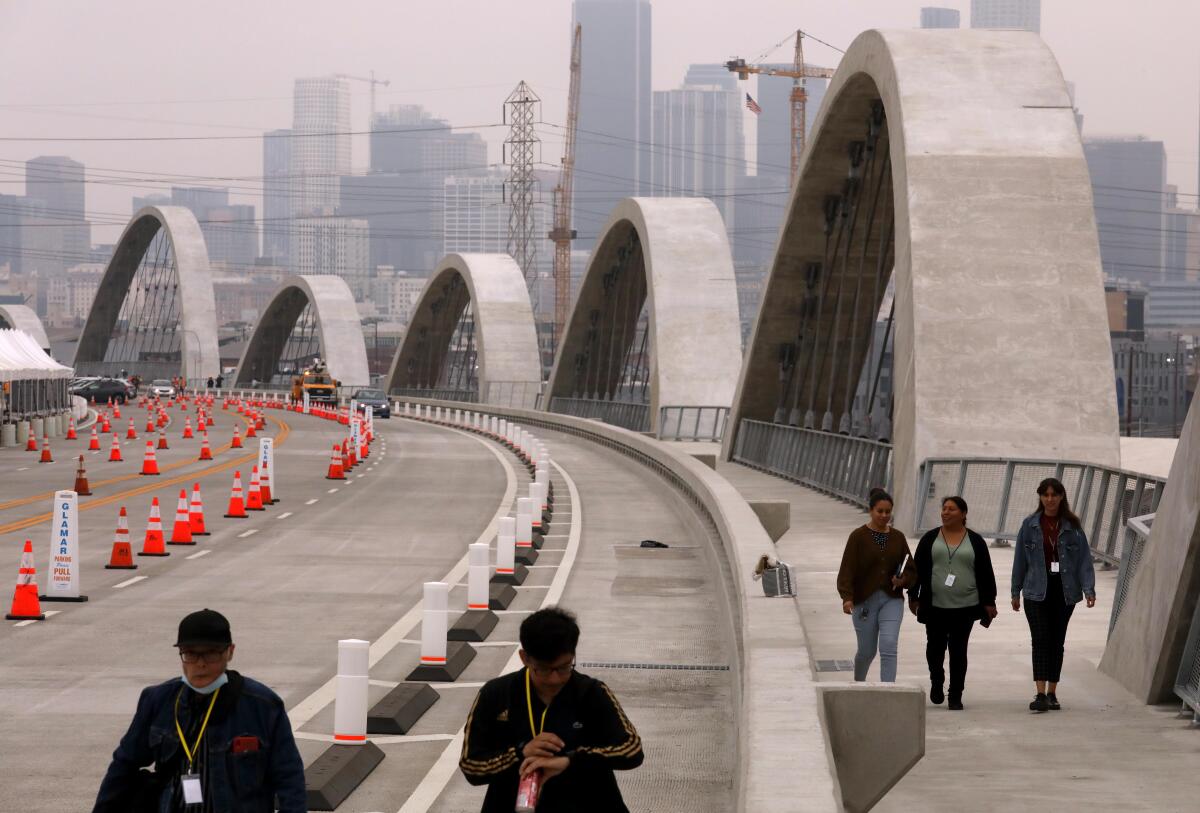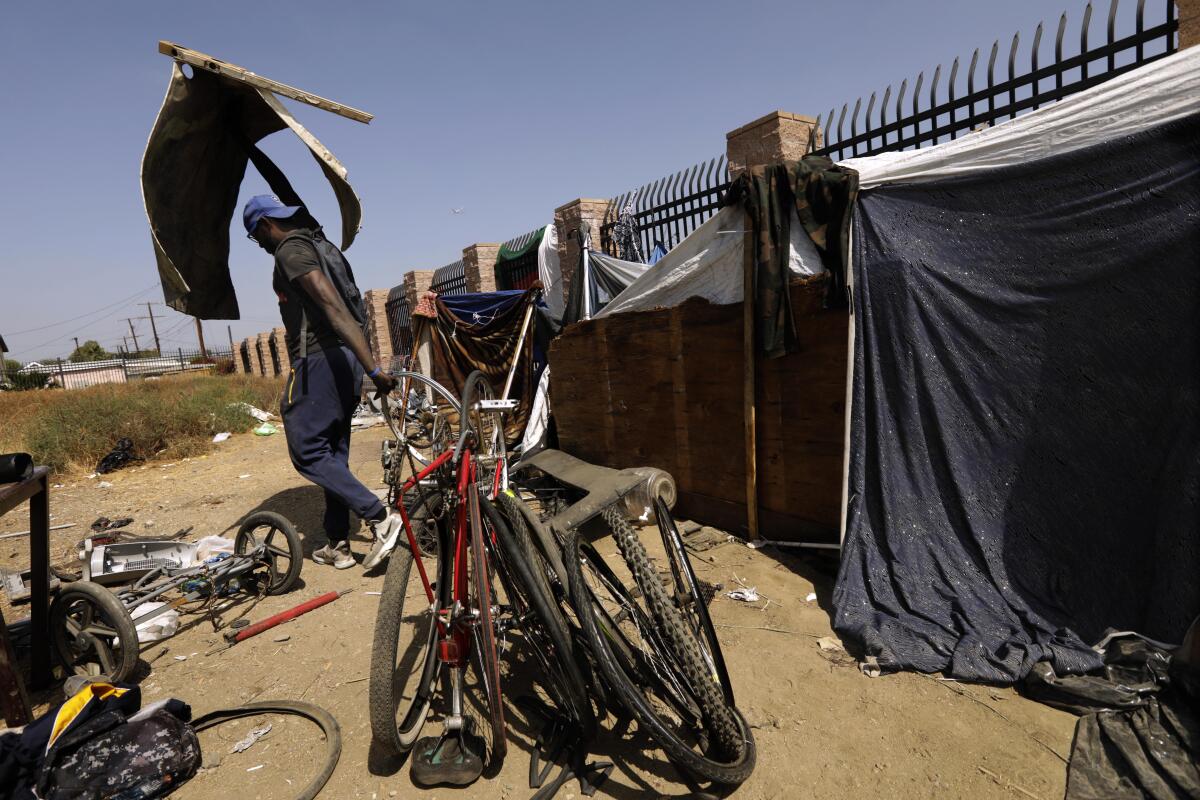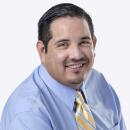Bad behavior on 6th Street Viaduct: We should have learned by now to expect the unexpected

- Share via
Good morning, and welcome to the Essential California newsletter. It’s Wednesday, July 20. I’m Andrew J. Campa, a metro reporter writing from the San Gabriel Valley (some say the best valley).
Welp (😬), it took less than 10 days for the first peel-outs, doughnuts, street takeovers and a wreck at the new 6th Street Viaduct, which connects Boyle Heights to Los Angeles’ Arts District.
Our Melissa Hernandez wrote about a pair of visitors seen “sitting atop” one of the bridge’s 20 archways on Sunday. The urban climbers eventually came down unharmed, but Los Angeles Police temporarily stopped traffic early Sunday morning and again Monday due to “street takeovers and vehicles being parked on the bridge.”
On Monday, what is believed to be the bridge’s inaugural crash happened around 11 p.m., according to reports from KABC-TV Channel 7. Videos surfacing on social media appear to show the incident: The driver of a white Dodge Challenger loses control and clips at least one vehicle before hitting a barricade and tapping a wall.
The scenes over the weekend differed greatly from a week earlier, when thousands of Angelenos gleefully crossed the bridge by foot, bicycle, roller skates, skateboard and other means during the July 10 grand opening.
Mayor Eric Garcetti described the bridge to our Rachel Uranga as “our generation’s love letter to the city.” Architect Michael Maltzan told columnist Carolina A. Miranda that the $588-million project “needed to represent something that could knit the city together in a more consequential way.”
There were concerns about homelessness, gentrification and bike lanes. Yet illegal racing, street takeovers and bridge shutdowns were hardly mentioned.
“It doesn’t take a criminal justice degree from ITT Tech to know that kids are going to peel out and race on the bridge,” Boyle Heights resident David Hernandez, 53, told Essential California on Tuesday. “It’s a pretty sweet-looking bridge.”
Hernandez said he was stuck in traffic along the bridge on Sunday en route to Mass with his wife, Gladys. He’s disappointed that the viaduct is “already being defaced” because it sends a message that the community “can’t have nice things.”
“It sucks because Boyle Heights will be the only ones blamed, when we don’t even know where these people are coming from,” he said. “I’m kind of surprised that city officials and the police didn’t have extra patrols and security for the first month, at least.”
But new transportation projects can take law enforcement and the local community by surprise. Case in point: the West’s first freeway.
Eighty-two years ago today, the second leg of that inaugural thoroughfare — the 110 Pasadena Freeway, also called the Arroyo Seco Parkway — was completed. This was the biggest stretch of the highway, about 3.7 miles between Cypress Park’s Avenue 40 and South Pasadena’s Orange Grove Avenue.
“Autoists are going to discover the thrills and time-saving advantages of driving over the stopless motorways planned for Los Angeles’ future,” said a report in The Times on July 20, 1940.
The excitement, as was written in The Times, centered on the highway’s lack of intersections, pedestrians, stop signs and impediments to free-flowing traffic found on city streets.
Police were instructed in the days following the opening to make sure motorists abided by one rule: “No reckless driving.”
Subsequently, drivers found an unexpected drawback to the freeway: speeding fines (💰). The Times reported on July 22, 1940, that “a number of motorists” were ticketed for speeding over a brisk 45 miles per hour.
The official ceremony for the completion of the third portion of the six-mile motorway was held Dec. 30 of that year. Rose Parade Queen Sally Straton helped usher in the highway, along with Gov. Culbert Olson.
As for the “uninterrupted flow of traffic from Pasadena’s Broadway to the N. Figueroa Street” promised by The Times on June 11, 1939, well, that lasted (wait for it) two days.
On New Year’s Day, Pasadena Police Chief Charles H. Kelley directed traffic from 4,000 feet above sea level aboard a Trans World Airlines (was a big deal once!) Skyliner only a couple of miles from the site of the Rose Parade and Rose Bowl. The chief radioed orders to Pasadena police stations, where they were relayed to officers on the street.
Congestion started at 9 a.m. at the parkway’s opening on the Pasadena side. Kelley, from the sky, directed the closure of all cross traffic near the Pasadena entrances to the freeway. This order was continued on and off throughout the day to break up the unplanned gridlock.
Surprises, whether in the form of doughnuts or traffic, continue to defy planners.
And now, here’s what’s happening across California:
Note: Some of the sites we link to may limit the number of stories you can access without subscribing.
L.A. STORIES

In an effort to revive a Watts community scarred by the Los Angeles riots of 1992, the city of L.A. purchased a swath of land. Hundreds of high-tech jobs were to follow. Decades later, all that remains are weeds and shanties as ineffective city initiatives stymied the community’s recovery. Los Angeles Times
Our daily news podcast
If you’re a fan of this newsletter, you’ll love our daily podcast “The Times,” hosted every weekday by columnist Gustavo Arellano, along with reporters from across our newsroom. Go beyond the headlines. Download and listen on our App, subscribe on Apple Podcasts and follow on Spotify.
POLITICS AND GOVERNMENT
Democrats, with the help of 47 Republicans, on Tuesday voted in favor of legislation protecting same-sex and interracial marriages. The vote, amid concerns that the Supreme Court ruling overturning Roe vs. Wade could jeopardize other rights, was 267 to 157. The Respect for Marriage Act’s passage through the Senate, which requires 60 votes, appears bleak, though. Associated Press
As Russia’s war in Ukraine continues, there’s been solidarity nationally and internationally for Sweden and Finland to join NATO. In Congress, the House voted 394-18, supporting each nation’s process. Only one California member of Congress voted against the move, Elk Grove Republican Tom McClintock. Here’s why. Sacramento Bee
CRIME, COURTS AND POLICING

The culture war has hit West Hollywood, where the City Council last month voted to reduce its budget for the Los Angeles Sheriff’s Department. That will likely result in the deployment of fewer deputies. Pundits on the right claim this is wokeism run amok and will imperil West Hollywood residents. Those in favor of the move say the City Council is thoughtfully rethinking what public safety should be. Los Angeles Times
During a contentious audit, Riverside County’s auditor-controller is accusing the county’s sheriff of not being transparent. The sheriff was accused of stonewalling the auditor, while the auditor told the sheriff that Riverside County was “not Somalia, where rule of law doesn’t matter.” Riverside Press-Enterprise
Support our journalism
HEALTH AND THE ENVIRONMENT
Los Angeles County is inching toward a new call for indoor masking due to rising cases of coronavirus-related hospitalizations and death. Hospitalizations — although below the peaks of earlier surges — are up 60% since the beginning of the month, while more patients are heading to intensive care units or dying. Some business interests are concerned that an implementation of mask mandates puts restaurant and store employees back in the crosshairs, having to enforce such guidelines with unruly patrons. Los Angeles Times
You’ve just tested yourself for COVID-19. And the results are negative. No, they’re positive. Should you report the results, or does that matter? Here are some answers. Los Angeles Times
CALIFORNIA CULTURE
As laws across the country are restricting abortion access, a few television shows, led by “This Is Going to Hurt,” have taken up the mantle of showing “messy, real, and raw” elements of birth. The dark TV comedy series follows overburdened doctors and midwives from a London hospital. There are graphic scenes of pregnancy and reproductive health emergencies some lawmakers would rather not acknowledge. Los Angeles Times
Hotel construction continues to lag in California, with one notable exception: San Diego County. The Atlas Hospitality Group confirmed that construction of its massive Gaylord Pacific Hotel in Chula Vista has skewed hotel construction numbers for San Diego County and the state of California. Hotel construction fell by 12% statewide through the first six months of the year with the number of rooms plunging by 11%. Twenty-nine hotels opened through the first six months, versus 51 a year ago. San Diego County seems fine, from a distance, with 2,000 rooms under construction. However, as Atlas points out, 1,600 rooms are tied up to one project. The Gaylord, the state’s largest facility under construction, will host 1,600 rooms, making it the county’s second-largest hotel. San Diego Union-Tribune
Free online games
Get our free daily crossword puzzle, sudoku, word search and arcade games in our new game center at latimes.com/games.
CALIFORNIA ALMANAC
Los Angeles: 87, partly cloudy. San Diego: 76, partly cloudy. San Francisco: 67, partly cloudy. San Jose: 83, sunny. Fresno: 107, sunny. Sacramento: 102, sunny.
AND FINALLY
Today’s California memory is from Thomas D. Penberthy:
I was raised in Buffalo, N.Y., where I was born in 1948. Buffalo was cold, dreary, damp and depressing. In 1956, my mom’s sister relocated from Buffalo to Fresno, and later to Modesto, Calif. We visited Fresno in 1957. I was fascinated by the sunshine and palm trees. I vowed that when I grew up, I would relocate, like my aunt, to sunny California. Unfortunately, it never happened. However, I did move to sunny Southwest Florida. Nonetheless, to this very day, I still dream of the Golden State and wish I was a “Californian.”
If you have a memory or story about the Golden State, share it with us. (Please keep your story to 100 words.)
Please let us know what we can do to make this newsletter more useful to you. Send comments to essentialcalifornia@latimes.com.
Sign up for Essential California
The most important California stories and recommendations in your inbox every morning.
You may occasionally receive promotional content from the Los Angeles Times.




